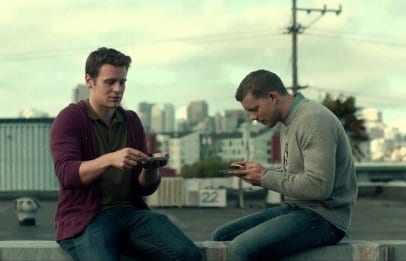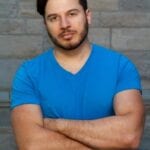We are a vicious people, homosexuals. When we’re not methodically chipping away at the fragile social and moral orders of the last two millennia, we turn our sights on our own, tearing down and devouring any other homosexual who dares to create art with our harsh criticisms of everything, from the quality of their work to their relative privilege. Oh, it’s a wonder that any gay man continues to make art at all, given the ungrateful LGBT community that awaits it!
That the sentiment expressed above is pure poppycock does not, unfortunately, prevent it from being repeated ad nauseum from entitled queer artists when their work fails to electrify the imaginations of the global gay audience.
For a more recent example, look no further than Looking director Andrew Haigh’s comments in Attitude magazine, where he blames his show’s demise on an unfaithful gay audience who, he says, refused to watch the show because it was too racy or because they didn’t think its main character was enough of an angel.
Looking was “too racy?” Did Haigh even watch Looking? This was a show in which the 30-year-old main character was scared of an uncircumcised penis.
Haigh would apparently like us to believe that the show’s low ratings and cancellation were the handiwork of fickle gays who clamour for better representation of queers in media and then complain when they get it, rather than the natural result of a show so boring that the most charitable think-pieces it generated posited that its dullness was, perhaps, a kind of virtue: “See, gay people don’t have to be entertaining soap opera characters. They’re as boring and awful as everyone else!”
Moreover, the intense criticism Looking received was not the work of devious homos who put Haigh in their crosshairs. The most withering critiques of the show typically began, “It’s terrible! I watched every episode and . . .”
That’s not the response of a hitman; it’s the response of a fan. The Looking haters were passionate about it — or at least about seeing queers on TV — and they just wanted it to be better.
As if Looking itself didn’t provide ample evidence that Haigh really doesn’t understand gay people, criticizing us for being overly critical misses the crucial role that gay people have long had as tastemakers. We are judgemental. We are picky. We are, at times, brutally harsh. But this is the necessary corollary to our passion when we rally behind something we love and elevate it to cult or even mainstream status. Our criticism helps to refine our tastes and push artists and producers to serve us better. If we simply gave participant ribbons to every queer artist who shows up on the cultural landscape, why would anyone trust our taste or care about our feelings about truly excellent art?
Must I mourn the tedious 18 episodes of Looking equally as much as the endlessly inventive, stillborn CBC pilot Gavin Crawford’s Wild West? Should I give the same Netflix review to the schlocky gay softcore films of David DeCoteau as I did to Thom Fitzgerald’s excellent lesbian drama Cloudburst? Does it benefit a talented hip hop artist like Cazwell to give him the same press as the tone-deaf, alleged comedy of Jonny McGovern?
People like Haigh would have us believe that if not for them, there would be no queer stories on TV. Leaving aside that Looking was not the unicorn he seems to think it is — we’re well over a decade after Queer As Folk, The L-Word and Noah’s Arc, and queer characters and sex are rampant on mainstream shows, not to mention that queers are all over web series — queer storytellers with massive LGBT fanbases are active in all aspects of film, TV, theatre and publishing: TV writer-directors Ryan Murphy (has there been a gayer show than Glee on network television?) and Alan Ball (Six Feet Under); filmmakers like John Waters, Dustin Lance Black (Milk), Jean-Marc Vallée (CRAZY, Dallas Buyers’ Club), Xavier Dolan (Tom à la Ferme) and Pedro Almodovar (Bad Education); and authors like Larry Kramer, David Sedaris and Dan Savage (upcoming sitcom: The Real O’Neals).
It’s true that gay men do eat our own, but it’s far from clear that our criticism weakens the cause for queer art. By contrast, all of the artists in the above paragraph have suffered scathing critiques during their careers, and all came back with masterpieces.
In all likelihood, I’ll watch the two-hour TV movie that’s meant to wrap up Looking’s dangling plots (there was a plot?), and in all likelihood, I’ll find it as tedious and uninspired as Haigh’s other work. But maybe I won’t. Maybe Haigh will have absorbed the audience feedback and give the show a send-off that’s entertaining, sexy, and doesn’t feel like homework to watch. But as a fan, I’ll be watching, and posting all my thoughts, good and bad, on Twitter.


 Why you can trust Xtra
Why you can trust Xtra


